Sales performance management (SPM) is a data-driven approach to planning, managing, and analyzing your company’s sales performance.
Latest figures suggest that sales performance management is a “must-have” system for sales teams in today’s fast-paced market.
According to OpenSymmetry:
- Companies yet to embrace SPM typically see only 25% of their reps achieve their sales quota goals.
- In contrast, sales organizations that apply sales performance management, over 81% of sales reps achieve their annual quota. Plus, these companies have 3x higher annual revenue growth compared to others.
In this guide, you’ll learn what sales performance management is, why implementing sales performance management is essential for both inside and outside sales teams, and how to implement an SPM strategy in your organization.
What is Sales Performance Management?
Sales performance management is the practice of overseeing and guiding sales professionals to achieve organizational goals and objectives. A robust and effective sales performance management process includes training and development, and monitoring a sales rep’s progress so that they can plan and set their own goals.
Sales performance management should not be confused with incentive compensation management (ICM), which allows you to automate and improve your incentive programs, compensation management, and processes. Structuring your sales incentives and compensation is only one (important) part of the entire SPM system.
Other parts of SPM use data to optimize planning, improve processes, and align stakeholders across all of your sales functions, such as capacity planning, territory mapping, and sales forecasting.
Why is SPM Important for Inside and Outside Sales?
Sales performance management ensures everyone is on the same page.
For instance, a sales team wants leaderboards, competitions, and gamification to ensure they hit their quotas. But the finance and sales operations teams want a planning process that rewards reps and grows company revenue. Using the right software to implement SPM gives your sales team and back-office administrators the tools they need to do their jobs effectively.
1. Sales planning and administration
Sales planning and administration covers creating, balancing, and assigning sales territories.
Without a sales performance management system, companies have to manually create territories. Naturally, this is an error-prone and laborious process. Territories may be unbalanced or unclear, which can hurt the sales pipeline and employee morale.
With a centralized and connected SPM system, you can create optimized territories and quotas based on combined geographic data, ZIP Code, or historical sales performance. This data-informed approach helps balance territories and quotas, which, in turn, leads to happier sales reps and better sales performance.
2. Compensation planning and administration
Planning and administering sales compensation plans is complicated.
Administrators have to get the balance just right — compensating reps too much can damage the bottom line, but paying them too little can demotivate them. A single, connected SPM system gives managers and admins a complete, up-to-date view to analyze sales compensation plan performance.
Administrators can quickly see which compensation plan components are costing the business, but failing to generate revenue. If they need to change things, administrators can use bonuses or sales competitions to get sales back on track.
3. Sales distribution and execution
Sales distribution and execution are critical front-office components of sales performance management that rely on the back-office planning to be in place. Think about it:
- How long does it take your company to plan and administer sales compensation plans?
- Are your sales territories balanced and assigned appropriately?
- Are quotas aligned to achievable targets and accepted by sales reps?
If sales reps are waiting for their territories or questioning their sales quotas, they’re usually not focused on selling, which means they have more to do later.
An SPM system with review and approval workflows means sales leaders can collaborate with finance and sales operations to speed up the planning process. For example, an experienced sales manager can suggest external factors that might impact a territory so the planning teams can investigate and make any necessary adjustments.
A sales performance management system enables a business to make informed, data-driven decisions to meet its sales and revenue goals.
Benefits of sales performance management
We already mentioned that companies who’ve embraced SPM get 3x more revenue than other companies. But what are the other benefits of SPM?
Improved sales forecasting accuracy
SPM tracking provides essential data that lets your company forecast future sales trends.
For example, if the data shows that your reps average six closed deals for every 15 prospects, then you can more accurately gauge future revenue based on the number of prospects your reps are working.
Better trained sales reps
Whether you have experienced or new reps in your sales team, employee development is a significant benefit of having a sales performance management process. Successful sales performance management adds structure and accountability to your sales training.
For instance, you could include these elements in a sales rep development plan:
- Complete mandatory training for sales enablement tools.
- Interview company sales leaders to understand operational scope.
- Read additional thought leadership material by sales professionals.
- Attend an upcoming sales seminar or conference.
Better territory management
Sales performance management data helps you assign each territory to a sales rep based on their skill set and experience level. For example, you can make sure that your top-performing sales reps work the most valuable accounts.
Better compensation structures
Sales reps should get credit for not only closing deals but also for retaining clients and growing accounts. A sales performance management system lets you uncover key metrics about who’s nurturing those long-term relationships and compensate them accordingly.
Increased sales and revenue
When reps are well trained, well compensated, and working the territories that most closely align with their skill set, you’ll see an increase in sales and revenue.
How to Implement a Sales Performance Management Process
Now you know why SPM is important for sales teams, let’s take a look at how to implement a sales performance management process that gets results.
Identify sales performance metrics
The first step is to identify your sales performance metrics. These metrics must align with your business objectives so reps understand how their actions contribute to the success of the business.
Here are some sales performance metrics to consider using for your sales reps:
1. Lead-to-opportunity conversion rate
This standard metric is the number of leads your sales reps convert into customers. At the end of the day, you want paying customers on your books, so this performance metric is definitely aligned with your business metrics.
If you find the conversion rate is not as high as expected, you can look into the reasons why. Perhaps the offer isn’t attractive, or maybe the sales rep is not selling the benefits.
2. Sales quota attainment
Looking at your conversion rates can give you an insight into how many deals you need to close to reach your targets.
But sales quota attainment shows you how close you’re coming to those targets. Tracking this metric is an essential part of sales performance management strategy as it shows you how well your sales team is performing as a whole and on an individual level.
You can also compare it with other metrics, like lead to close rate, to see if the quotas are realistic or if they need to be modified to keep sales reps motivated.
3. Sales productivity metrics
Sales productivity metrics record the speed at which your sales reps reach their quota and which activities they spend time on.
Examples of sales productivity metrics include the percentage of:
- Total hours spent prospecting.
- Total hours spent on data entry.
- Closed-won deals (how many closed deals resulted in a sale over a specific sales period).
Communicate goals with the sales team
Once you’ve identified what sales performance metrics you’re going to use, you need to inform your team. This communication process allows your sales reps to digest the information and provide their feedback.
At this stage, you need to have an open dialog about company objectives and goals to make sure your sales team is on board. If they have genuine concerns, you can make the necessary adjustments. On the other hand, you can also explain the reasoning behind the goals and how you’ll use them to reward top performers.
Provide training and feedback
Identify the training resources and tools each sales rep requires.
It’s important to allocate time in their schedule for both formal classroom training and individual learning. You’ll also need to assign any mentors or SMEs who can provide mentoring and training.
Create a performance plan that includes learning and development targets as well as sales performance quotas.
You’ll need to schedule regular performance reviews to:
- Review documented goals.
- Share relevant feedback on successful projects.
- Offer constructive feedback on areas to improve.
- Provide an overall performance summary and rating.
Cut and assign territories
The next step is to divide and assign territories to maximize sales team efficiency.
It’s important to make sure your reps don’t step on each other’s toes, that they all have enough prospects to work, and that top performers are working the most valuable accounts.
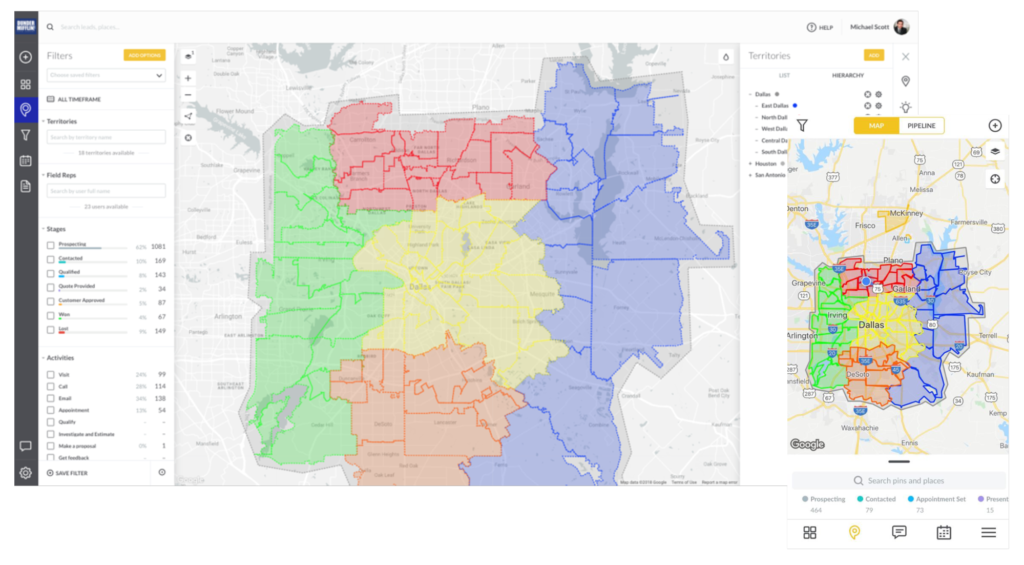
Image: Mapping sales territories with SPOTIO.
Effective sales planning also requires viewing performance by territories to ensure your resource allocation is appropriate.
Implement A Hybrid Sales Process
Support your sales reps by providing the right technology. For example, SPOTIO offers both a web and mobile interface that reps can use to communicate via text, email, or phone. With all communication contained in a single platform, hybrid sales reps can quickly pivot between conversations and see a history of their interaction with every client and lead.
Create a healthy level of competition
Sales reps thrive off competition, and there’s nothing better to keep them motivated than a sales leaderboard. You can create various leaderboards based on your performance metrics, such as appointments, wins, conversions, or revenue. Plus, you can run separate competitions and performance incentives to motivate sales teams.
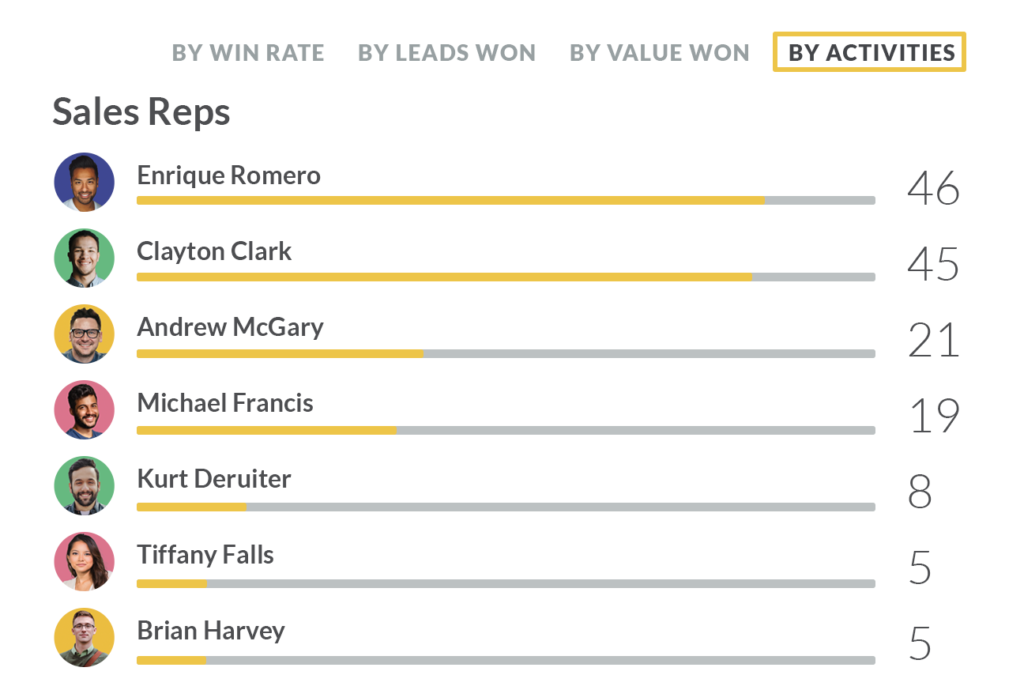
Whatever you choose, leaderboards give reps real-time figures on how they stack up against teammates.
Monitor rep productivity
Finally, you need to monitor your reps’ daily performance to see exactly what they’re doing. By tracking their activity, you’ll know when to train them based on skills, rather than effort.
Are they getting around their territory, making the expected number of visits but failing to close the deal? Or are they taking too long to reach appointments and missing out on sales?
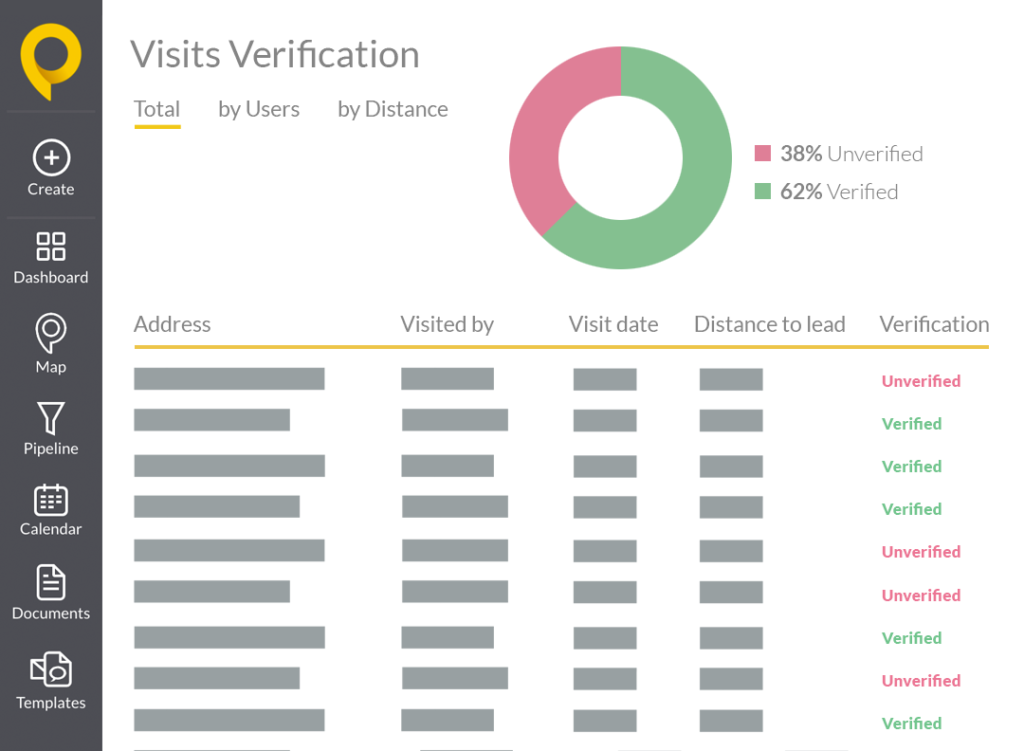
Monitoring sales rep productivity increases accountability in the field.
What to Look for in Sales Performance Management Software
If you’re going to manage and optimize your organization’s sales performance, you need the right tools.
Sales performance management software automates and integrates sales processes with other operational and financial data to improve performance and efficiency across the sales organization.
Here are some key features to look for when selecting effective SPM software.
Sales rep visibility
Tracking your sales reps in the field lets you judge whether you need to coach them based on skills rather than effort.
For example, if they’re not closing many deals but are getting to all their appointments on time, you know they’re putting in the effort but may need a little coaching to help close more deals.
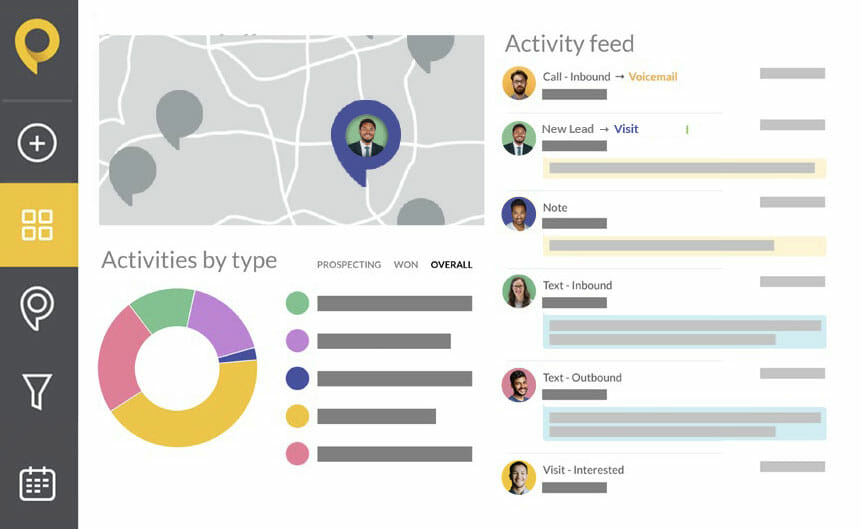
Sales compensation management
You want an accurate compensation system that allows you to manage and pay your sales reps fairly based on their performance against their goals, and also lets them track their own progress toward goals.
Sales quota management
You need a way to forecast future quota targets based on relevant and accurate data from one system rather than disparate platforms.
Sales territory management
Your sales territory management software should allow you to divide territories strategically to maximize sales team efficiency. You’ll want the ability to create territories and allocate the best sales rep to each territory so you can generate the most revenue.
For example, SPOTIO’s territory mapping feature helps reps squeeze the most value from each sales territory. Managers are able to cut and assign territories by geographic boundaries (state, county, city, etc.), or by drawing on a map.
Sales Process Automation
The challenge of working multiple leads is keeping track of where each one is in the sales process. With SPOTIO’s AutoPlays feature, you’ll never have to worry about leads falling through the cracks — just define your sequence of touchpoints, and SPOTIO will notify reps when it’s time to check in with their leads and customers.
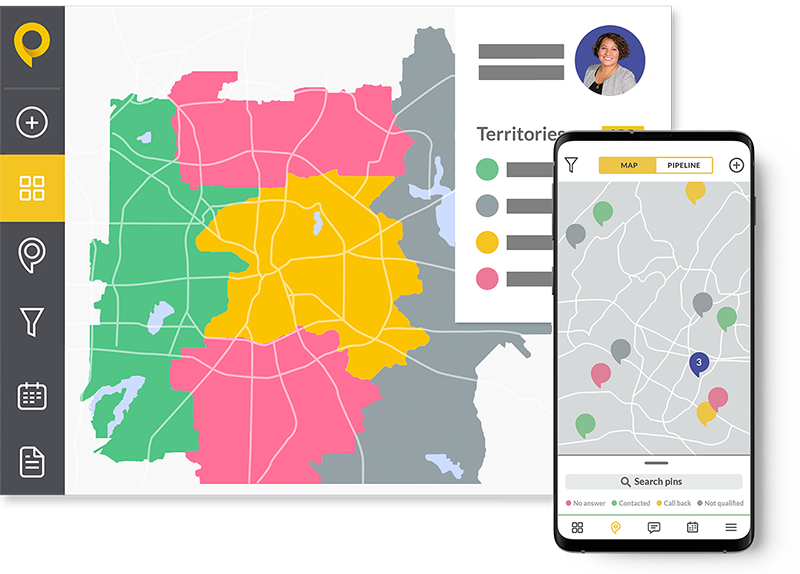
Colorized pins also make it easy for reps and managers to spot new and existing customers on the map. Pins can then be sorted by status – no answer, contacted, call back and not qualified – to best fit the desired workflow for the day.
Sales leaderboards
Sales leaderboards are an essential gamification feature, as they motivate your sales reps to out-perform their colleagues. To add gamification to your sales performance management strategy, e sure your software can:
- Create leaderboards for the metrics you want to improve, such as calls, appointments, wins, or revenue.
- Give sales reps real-time tracking into how they’re performing against teammates.
- Run competitions and incentivize performance.
Sales performance analytics
It’s important to have a clear, accurate view of your sales performance metrics. Otherwise, you’re just taking a “best guess” approach.
Sales performance analytics provide clear insights so you can make informed decisions and hit your targets. You can also use the data to forecast future campaigns so quotas and targets are more realistic and achievable.
With SPOTIO’s My Reports feature, you can set the parameters for your reports to include only the data that’s most relevant and save each report as a template, so you can quickly reproduce it at any time.
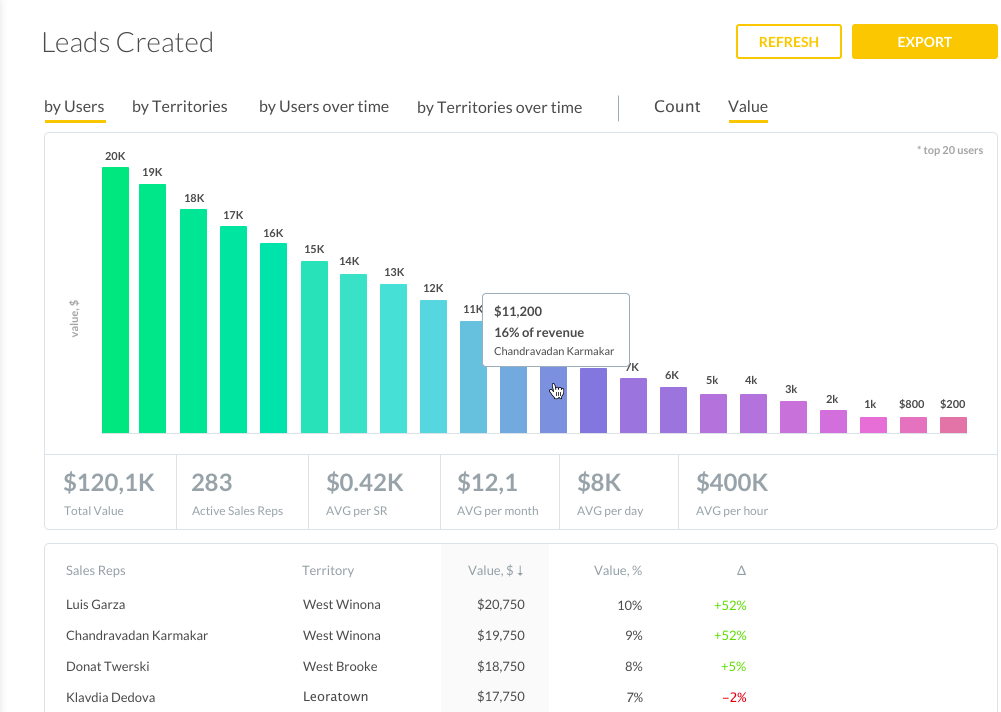
Image: Pipeline dashboard inside SPOTIO.
Improve Your Sales Performance Management Strategy Today
Sales performance management increases revenue for those companies that embrace it.
Using modern, integrated sales performance management software allows you to optimize planning and improve processes across all of your sales functions, including forecasting, territory mapping, quota setting, and compensation.
Try SPOTIO to manage and improve the performance of your outside sales team.





